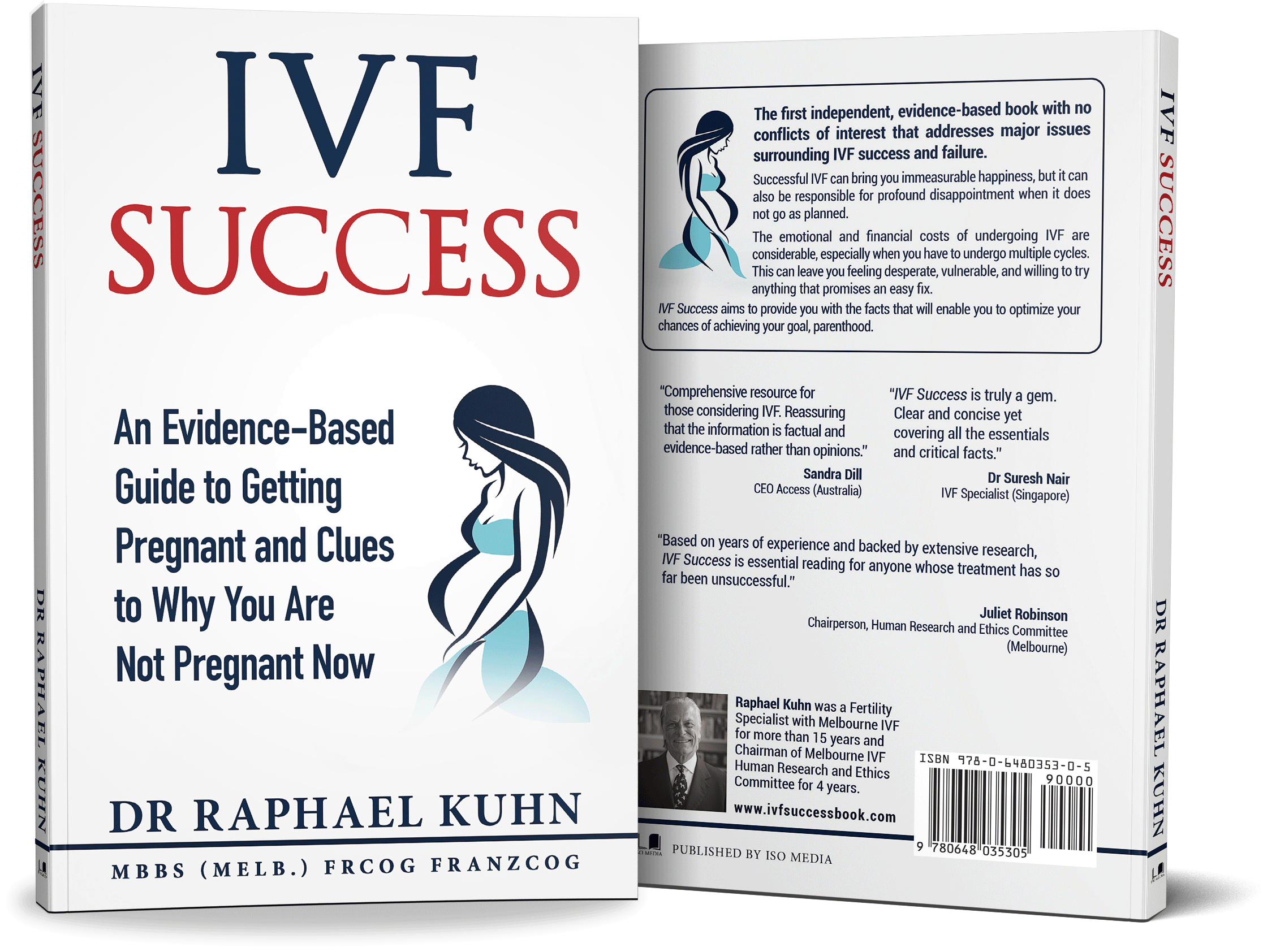“Comprehensive resource for those considering IVF. Reassuring that the information is factual and evidence-based rather than opinions.”

The first independent evidence-based book with no conflicts of interests to address major issues surrounding IVF success and failure.

“Comprehensive resource for those considering IVF. Reassuring that the information is factual and evidence-based rather than opinions.”
Sandra Dill AM
CEO ACCESS Australia’s National Infertility Network

“IVF Success is truly a gem. Clear, concise yet covering all the essentials and critical facts surrounding IVF treatment.”
Dr Suresh Nair
IVF Specialist, Singapore

“Based on years of experience and backed by extensive research, this book is essential reading for anyone whose IVF treatment has not been successful.”
Juliet Robinson
Chairperson Melbourne IVF Human Research and Ethics Committee, Australia
Some describe IVF treatment as miraculous. It can bring you immeasurable happiness in the form of a perfect bundle of joy, but it can also be responsible for profound disappointment and sadness when it does not go as planned.
The emotional and financial costs of undergoing IVF are considerable, especially when you have to undergo multiple cycles, which are physically and psychologically exhausting, not to mention expensive. Each time you begin with a rush of hope, and when that hope is dashed yet again, it can make you feel desperate.
This desperation when things are not working out makes you vulnerable and more willing to try anything that might help, even when there is no proof that it will. Unfortunately, there are many people willing to take advantage of your deepest desires and offer these ineffective services. For example, there is currently no good high quality evidence that IVF outcomes are improved by the treatment of uterine Natural Killer cells, yet many patients turn to it after experiencing unsuccessful outcomes.
I have written this book in the hope of spreading evidence based information, so that you are fully aware of the facts and fiction surrounding IVF treatment and have the best chance at IVF success.
I began my career as a specialist obstetrician and gynecologist, then focused on endoscopic (keyhole) surgery, and finally spent more than 15 years as an IVF specialist. This was followed by two years providing independent second opinions to unsuccessful IVF patients. It was this experience that prompted me to write this book.
While providing these second opinions, it became apparent that there were major problems:incomplete understanding of important information, suboptimal communication, misunderstandings and unrealistic expectations. There was also a desperate desire to believe that unproven treatments might work, many adopting the attitude that if a treatment causes no harm, they might as well give it a try since they have nothing to lose. However, there is an emotional and financial cost when it ultimately does not work.
Let’s take a look at some of the facts presented in this book:
The age of the female IVF patient (whose eggs are used for fertilization, be it oneself or an egg donor) is the most important factor determining the outcome of IVF treatment. It does not matter how young you look, there is nothing that can change your age or the age of your eggs. Age is going to be a major factor in infertility until we learn to populate older ovaries with young eggs derived from stem cells. As you age, more of your eggs are chromosomally abnormal, and therefore result in the creation of abnormal embryos. Also, as you get older, your ovarian reserve, your capacity to produce fertilizable eggs, goes down.
It is tempting to want to rush into treatment, but if you took the time to address lifestyle issues including weight, you could save yourself a lot of heartache and money, and may not even need IVF.
There are many ways in which your ovaries can be stimulated to produce more fertilizable eggs, so hopefully more embryos are created. However,more may not always be better, and increasing the dose of ovulatory stimulant may not be the answer.
Good embryo transfer technique is critical for the best possible chance of a favorable outcome. Trauma,which causes bleeding(blood is toxic to embryos) or uterine contractions(which could expel the embryo after transfer), must be avoided if at all possible.
A straight forward technique, endometrial scratching, that can be performed as an office procedure, may significantly improve the likelihood of success if recurrent implantation failure is the problem.
There is a simple blood test, serum progesterone, that can predict the likelihood of an unfavorable endometrium (uterine lining) for embryo implantation in a stimulated cycle (one in which eggs are collected). Therefore, it would be unwise to perform a fresh embryo transfer in a cycle that was predicted to have an unfavourable endometrium. In this case, it is wiser to freeze all embryos, and individually thaw and transfer them in subsequent natural or artificial menstrual cycles until a pregnancy is achieved.
There are many more areas of interest and relevance to be found in this book. If you have thus far been unsuccessful with IVF treatment, I hope you not only find some answers in this book but also learn things that enable you to have a more engaging and informed consultation with your fertility specialist.
